Menu
-
MenuInapoi
- Home
-
Categorii
-
-
Categorii
-
Semințe de legume
-
Soiuri după țară
- Soiuri din Armenia
- Soiuri din BiH
- Soiuri din Croația
- Soiuri din Franța
- Varieties from Germany
- Varieties from Greece
- Varieties from Hungary
- Soiuri din India
- Varieties from Italy
- Soiuri din Japonia
- Soiuri din Macedonia de Nord
- Varieties from Peru
- Varieties from Russia
- Varieties from Serbia
- Soiuri din Slovenia
- Varieties from Spain
- Varieties from Thailand
- Soiuri din Turcia
- Varieties from USA
- Semințe de roșii
- Semințe de porumb
- Familia Dovleac
- Familia Bean
- Semințe de castraveți
- Seminte de ardei gras
- Familia morcovului
- Familia ceapa
- Semințe de salată verde
- Familia cartofilor
- Familia de varză
- Semințe de ridiche
- Familia sfeclei
- Semințe de pepene verde
- Semințe de pepene galben
- Semințe de conopidă
- Familia de floarea soarelui
-
Soiuri după țară
- Semințe de fructe
- Seminte de Chili Peppers
- Semințe de plante medicinale
- Semințe de plante cățărătoare
- Copaci - Arbust - Semințe
- Semințe de palmier
- Semințe de ierburi ornamentale
- Semințe de tutun
-
Semințe de legume
-
-
-
-
- PRODUSE NOI
- Crează un cont
- Livrare - Plata
- FAQ
Last Product Reviews
Out of the two seeds, one germinated and the other one was dead and floatin...
By
 Riikka H on 07/03/2024
Riikka H on 07/03/2024
Verified Purchase
Sunt 22 produse.
Se afiseaza 16-22 din 22 produs(e)

Planta gigantica (cu fructe gigantice)
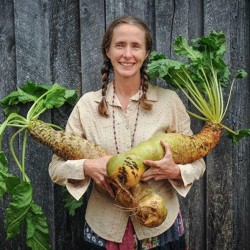
Giant Yellow Eckendorf Beet...
Pret
1,85 €
(SKU: VE 63 E (3g))
Seeds Gallery EU,
5/
5
<h2><strong>Giant Yellow Eckendorf Beet Seeds</strong></h2>
<h2><span style="color: #ff0000;" class=""><strong>Price for Package of 100 (3g) seeds.</strong></span></h2>
<p>The 1927 Henry Fields catalog said, “Giant, smooth, long roots of cylindrical shape, weighing up to 9 kg (20 pounds) each and growing two-thirds above ground. Solid white flesh with high food value.” These big yellow-skinned roots are perfect for growing as animal food, a tradition that is finally being brought back on many small farms.</p>
<p>High nutrition and vitamin content, tops are rich sources of vitamin C, eat-in salads or soups. A native of northern Africa and the western Mediterranean, ancient Greeks have used leaves only. Beetroot can be steamed with other vegies or grated raw as well as boiled and pickled for salads. Best results in soil with PH over 6 and if always kept moist. Can sow indoors and transplant. Thin to 30-50mm, young thinnings may be transplanted older thinnings as a leaf vegetable, sow after frost. Roots store well after harvest. Sow spring to autumn, anytime in mild climates. 50-90 seeds per gram</p>
<p><strong>Uses</strong></p>
<p>Contemporary use is primarily for cattle, pig and other stock feed, although it can be eaten – especially when young – by humans. Considered a crop for cool-temperate climates, the mangelwurzel sown in autumn can be grown as a winter crop in warm-temperate to sub-tropical climates. Both leaves and roots may be eaten. Leaves can be lightly steamed for salads or lightly boiled as a vegetable if treated like English spinach. Grown in well-dug, well-composted soil and watered regularly, the roots become tender, juicy and flavourful. The roots are prepared boiled like potato for serving mashed, diced or in sweet curries. Animals are known to thrive upon this plant; both its leaves and roots provide a nutritious food. George Henderson, a 20th-century English farmer and author on agriculture, stated that mangel beets were one of the best fodders for dairying, as milk production is maximized.</p>
<p>The mangelwurzel has a history in England of being used for sport,[5] for celebration, for animal fodder and for the brewing of a potent alcoholic beverage. The 1830 Scottish cookbook The Practice of Cookery includes a recipe for a beer made with mangelwurzel.[6] In 19th-century American usage, mangel beets were sometimes referred to as 'mango.'</p>
<p>During the Irish Famine (1845–1852), Poor Law Guardians in Galway City leased (on a 999-year-lease) a twenty-acre former nunnery to house one thousand orphaned or deserted boys ages from five to approximately fifteen. Here the boys were taught tailoring, shoe making, and agricultural skills. On a five-acre plot, they grew potatoes, cabbage, parsnips, carrots, onions, Swedish turnips, and "mangold wurtzel"--both for workhouse consumption as well as for a cash crop. See Lord Sydney Godolphin Osbourne's "Gleanings in the West of Ireland" published in London 1850, T & W Boone, page 58.</p>
<p>As with most foods, subsisting on solely one crop can produce dietary deficiency. The food shortages in Europe after World War I caused great hardships, including cases of mangel-wurzel disease, as relief workers called it. It was a consequence of eating only beets.</p>
<p><strong>Growing requirements</strong></p>
<p>In general, mangelwurzel are easy to grow. They may require supplementary potassium for optimum yields, flavour and texture, and foliage readily displays potassium deficiency as interveinal chlorosis. This can be corrected with either organic or nonorganic sources of potash.</p>
<p><strong>In tradition</strong></p>
<p>In South Somerset, on the last Thursday of October every year, Punkie Night is celebrated. Children carry around lanterns called "Punkies", which are hollowed-out mangelwurzels. Mangelwurzels are also carved out for Halloween in Norfolk and Wales. Also N.W. Cumberland (Workington), in the 1940s and 50s -- for "Jack o'Lantern" night.</p>
<p>John Le Marchant recommends cutting the "mangel-wurzel" to learn the proper mechanics for a draw cut with the broadsword in his historic manual on swordsmanship.</p>
<p><strong>In popular culture</strong></p>
<p>It is the source of the name for the English folk/pop/comedy/scrumpy-and-western musical group The Wurzels.</p>
<p>English comedian Tony Hancock made a short song about mangelwurzels in the Hancock's Half Hour episode "The Bowmans".</p>
<p>The mangelwurzel is featured in the 1984 novel Jitterbug Perfume written by Tom Robbins. The main character Alobar originally hails from a Slavic nation where beets are quite prevalent, and eventually the mangelwurzel is used as the base note in the mysterious perfume from which the book derives its name.</p>
<p>The mangelwurzel also had a role in the cult TV kids show as Worzel Gummidge's head, where it could often be heard to say things like "go boil your head."</p>
<p>Mangels are a frequently mentioned animal fodder in George Orwell's novel, Animal Farm.</p>
<p>Mangel wurzel is the only vegetable that was available for Sarah Bruckman to purchase in Two Fronts by Harry Turtledove. Turtledove also uses it as a staple of the post-eruption Maine diet in his Supervolcano series.</p>
VE 63 E (3g)

- La reducere!

Varietate din Ungaria
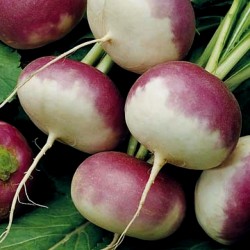
Hungarian Sugar beet seeds...
Pret
2,25 €
(SKU: VE 163 (1g))
Seeds Gallery EU,
5/
5
<h2><strong>Hungarian Sugar beet seeds Horpácsi</strong></h2>
<h2><span style="color: #ff0000;" class=""><strong>Price for Package of 500 (1g) seeds.</strong></span></h2>
<p>Due to the sufficiently sweet radish taste in the rainy landscapes of Hungary, it is grown not only for fodder but also for food. It is pickled like sauerkraut. It is frost tolerant and can be harvested in late autumn. Its root is flat, round, the apical part is purple in color, protruding slightly from the ground. Sugar beet seeds Horpácsi is not sensitive to frost, it still grows during the autumn, you can pick it up in late autumn.</p>
<p>Sowing depth: 2-3 cm.<br>Optimal germination temperature: 10-15 ° C.</p><script src="//cdn.public.n1ed.com/G3OMDFLT/widgets.js"></script>
VE 163 (1g)


Planta rezistenta la frig si inghet

Varietate din Ungaria

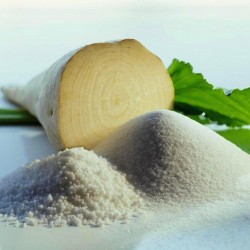
Sugar beet seeds Authority...
Pret
1,75 €
(SKU: P 8)
Seeds Gallery EU,
5/
5
<meta http-equiv="Content-Type" content="text/html; charset=UTF-8" />
<h2><strong>Sugar beet seeds Authority - Heirloom</strong></h2>
<h2><span style="color: #ff0000;"><strong>Price for Package of 20 seeds.</strong></span></h2>
<p>Sugar beet - a cold-resistant, light-loving culture, medium-demanding to the fertility of the soil. Sugar beet gives high stable yields, easy to transport. Sugar beet loves heat, light, and moisture.</p>
<p>The amount of sugar in the fruit depends on the number of sunny days in August — October. Sugar beet is used not only for making sugar but also for feeding animals.</p>
<p>The optimum temperature for seed germination is 10–12 ° C, growth, and development is 20–22 ° C. Shoots are sensitive to frost.</p>
<p>Name: Sugar beet Authority<br />Harvest: 75-100 days<br />Root weight: 500-850 g<br />The sugar content: 18-21%<br />Sowing depth: 2-3 cm.</p>
<p>tion temperature: 10-15 ° C.</p>
P 8 (20 S)


Varietate din Slovenia
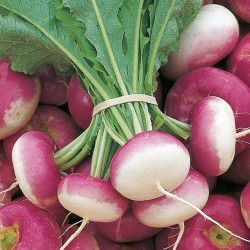
Semințe de sfeclă Kranjska...
Pret
1,45 €
(SKU: VE 105)
Seeds Gallery EU,
5/
5
<!DOCTYPE html>
<html>
<head>
<meta http-equiv="Content-Type" content="text/html; charset=UTF-8" />
</head>
<body>
<h2><strong>Semințe de sfeclă Kranjska rotunde</strong></h2>
<h2><span style="color: #ff0000;"><strong>Preț pentru pachetul de 300-400 (1g) semințe.</strong></span></h2>
<p>Sfecla Kranjska este un soi timpuriu pentru utilizare fără întârziere și este bună pentru decapare și consum proaspăt. Are o formă rotundă plată cu capul roșu-violet. Dacă există suficientă umiditate, aceasta prosperă în orice sol. Crește bine în apropierea salatei, spanacului și fasolea.</p>
<p>O rădăcină rotundă sau cilindrică îngroșată este folosită ca aliment. La vârf este o rozetă cu frunze ovale alungite, de culoare verde deschis și păroase. Pe tulpină există inflorescențe grupate. În 1 g pot fi 300 - 400 de semințe.</p>
<p>Sfecla roșie este cultivată după cereale, mazăre industrială sau culturi furajere timpurii. Este utilizat în combinație cu consumul uman și parțial ca furaj. Se dezvoltă în orice sol suficient de umed.</p>
<p>Nu tolerează stagnarea (reținerea apei). Este cel mai profitabil să-l crească cu irigare.</p>
<p>Sfecla roșie nu trebuie să fie însămânțată în același loc timp de cel puțin 3-4 ani și, în acel moment, nu trebuie să existe alte varze în acel loc.</p>
<p>Semănatul / plantarea navelor</p>
<p>Semințele de sfeclă germinativă germinează aproximativ 15 zile. Temperatura minimă de germinare este de 5 ° C și cea optimă de 20 ° C. Poate rezista înghețurilor ușoare până la -4 ° C dacă nu durează mult.</p>
<p>Se cultivă în principal prin însămânțare directă, dar este posibil să crească și din răsaduri. Este semănat cu o semănătoare de precizie. În țările europene, cultivarele timpurii sunt cultivate prin însămânțare din martie până în mai, cu o distanță între rânduri de 20-30 cm și o distanță între rânduri de aproximativ 10 cm, care necesită 1,5-2,5 kg / ha de semințe. În 80-60 de zile rădăcina îngroșată atinge un diametru de 6-10 cm când este gata de recoltare.</p>
<p>Dacă este planificată însămânțarea a 15 - 20 de plante / m2, se însămânțează la o distanță de rând de 40 cm și la o distanță de rând de 5 - 10 cm. În funcție de precultură, poate fi semănat de la sfârșitul lunii iunie până la mijlocul lunii iulie.</p>
<p>Recoltarea și depozitarea navelor<br />Sfecla laterală este recoltată în a doua jumătate a lunii octombrie sau la începutul lunii noiembrie, înainte de înghețuri severe. Se scoate cu excavatoare adecvate, frunzele sunt tăiate și sortate după mărime. Randamentele depind în mare parte de compoziția obținută și de cantitatea și distribuția precipitațiilor și pot fi de 20 - 60 t / ha.</p>
</body>
</html>
VE 105 (100 S)

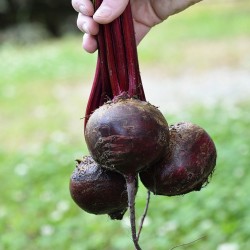
Semințe de sfeclă roșie...
Pret
1,35 €
(SKU: VE 204 (2g))
Seeds Gallery EU,
5/
5
<h2><strong>Semințe de sfeclă roșie Detroit</strong></h2>
<h2><span style="color: #f80000;" class=""><strong>Preț pentru pachetul de 120 (2g) semințe.</strong></span></h2>
Sfeclă roșie - Detroit este o varietate foarte veche de sfeclă care se comportă încă extrem de bine. Soi foarte popular pentru cultivare. Rădăcinile în formă de glob roșu închis cresc până la 7 cm și au un gust foarte bun. Blaturi verzi cu nuanțe de roșu închis.<br><br>Această plantă medicinală este cunoscută ca medicament de aproximativ 2000 de ani. Sfecla roșie este un antianemic natural, antibacterian, anticancerigen, antipiretic, antioxidant, antisclerotic, detoxifiant, diuretic, remineralizant.<br><br>Sucul de sfeclă roșie regenerează ficatul și previne îmbătrânirea. Chiar și în medicina timpurie, sfecla este un remediu pentru sânge, mai precis tratamentul anemiei, deși are un efect curativ asupra mai multor alte boli.<br><br>Sfecla reglează cu succes tensiunea arterială. Sucul de sfeclă roșie este un antipiretic util, deoarece scade temperatura ridicată a corpului. Semințele de sfeclă roșie sunt utilizate pentru tratamentul terapeutic al tumorilor genitale și intestinale.<br><br>Semănat:<br>Semănați direct de la 1,5 cm adâncime de la mijlocul lunii aprilie până în iunie.<script src="//cdn.public.n1ed.com/G3OMDFLT/widgets.js"></script>
VE 204 (2g)


Varietate din Spania

Planta rezistenta la frig si inghet
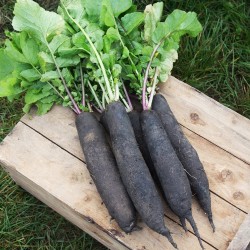
Semințe de sfeclă de munte...
Pret
1,25 €
(SKU: P 4)
Seeds Gallery EU,
5/
5
<h2 class=""><strong>Semințe de sfeclă de munte negru</strong></h2>
<h2><span style="color: #ff0000;"><strong>Preț pentru pachetul de 20 de semințe.</strong></span></h2>
<p>Soi cu pielea maro închis sau negru și carne albă, lungă și subțire, de aproximativ 20cm. foarte adaptat climelor reci și uscate.<br /><br />Napul negru de munte este o rădăcină, un tubercul cu pielea neagră și carne albicioasă, cu o aromă plăcută și ușor picantă. Se recoltează iarna și se consumă până în martie. Este mai fină și mai gustoasă decât restul soiurilor de nap.<br /><br />Se folosește pentru creme sau supe, dar și pentru garnitură și crude în salate, sau prăjite ca cartofii.<br /><br />Origine: Les Refardes - Spania</p>
<script src="//cdn.public.n1ed.com/G3OMDFLT/widgets.js"></script>
P 4 (20 S)










